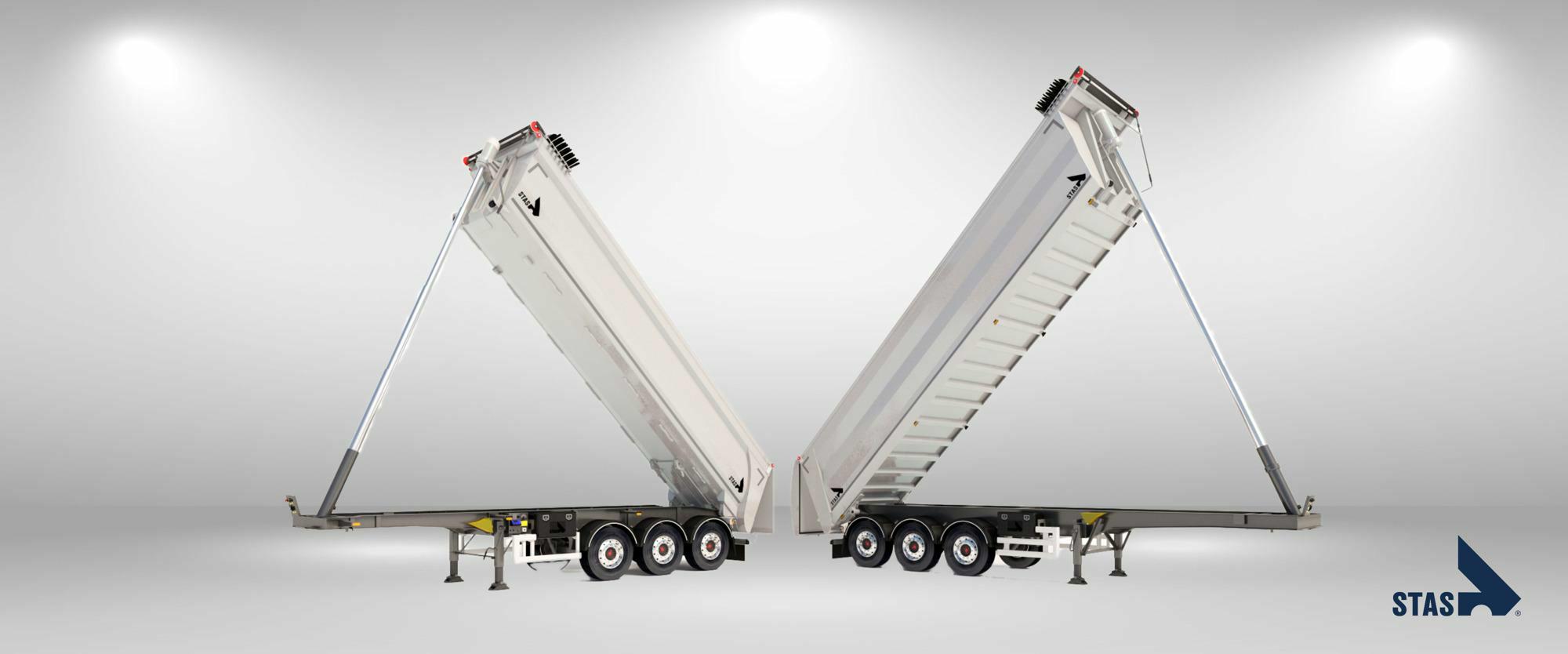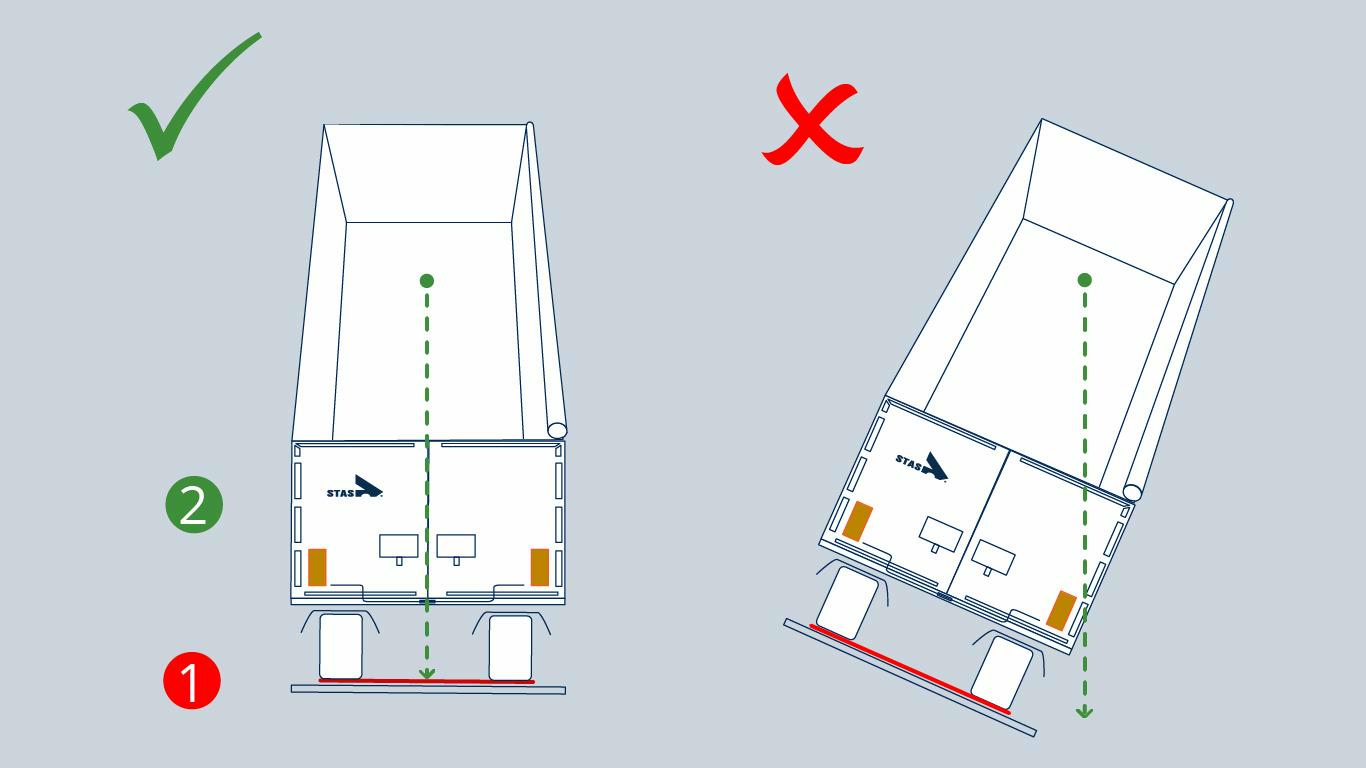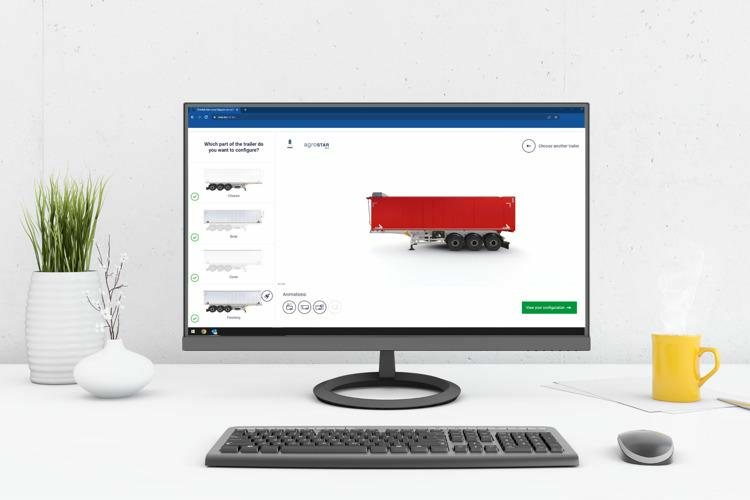Stability with STAS tippers

In an ideal world, every tipper is stable and no vehicles would tip over. However, we know that our vehicles do not always end up in ideal working environments: unstable and uneven ground, strong winds, a sticky load... You can undoubtedly imagine situations that have already made things difficult for you.
As a driver, you often don’t know in advance in which conditions you’ll be unloading. We are here to help you with additional insight on how you can improve conditions so that the risk of tipping over becomes minimal. By making minute improvements to conditions, you can increase the stability of your tipper and, in the process, improve the safety and the ease of use. But let's start at the beginning!
When is a tipper stable?
Let's have a look at this from a physics point of view. There are 2 elements that affect the stability of a tipper:
- The support surface: this is the surface on which the body of the tipper rests or relies on during tipping.
- The centre of gravity: the centre of gravity is the theoretical point where the total mass is balanced.
So when is the tipper stable? When the centre of gravity is above the support surface, in principle you do not tip over (1). If the centre of gravity is outside the support surface, there is a good chance that the vehicle will topple over while tipping (2).

How does this work when tipping?
It all starts with the basics: the ground surface! A surface that is perfectly level is obviously the dream scenario. In reality, it’s always best to look for the most level surface for tipping. A level surface makes it easier to keep the support surface and centre of gravity in line.
When you start tipping, you push the body and the centre of gravity upwards. In an ideal situation, the centre of gravity will lower as the load is unloaded. However, if you have a sticky load, it may stick to the front of the body, keeping the centre of gravity at the top. The more you tip, the higher the centre of gravity will be and the more likely it is for the tipper to tip over. In this case, a level surface is crucial. If you often transport sticky loads, it may be interesting to invest in a liner: this is a covering or lining on the inside of the body that makes sticky loads stick less to the body and therefore easier to unload. Mind you, external factors such as a strong gust of wind can also be enough to tip a tipper if it is at maximum height and you’re dealing with a sticky load. So definitely consider all circumstances, foreseen or unforeseen.

Why is a STAS tipper the most stable?
The tracking
The stability of the tipper during driving and tipping is determined by the track or transverse distance between the tyres. Therefore, the track is provided as wide as possible by 2,140mm as standard. A wider track results in a more stable trailer. On the other hand, it is also important that the chassis itself, as the mechanism between the tipping body and the contact with the road surface, is provided as wide as possible. This is because a wider chassis offers more stability as it has a larger bearing surface and can distribute forces better.
Rigidity of the chassis and body
The less the structure "flexes" or bends, the less the centre of gravity will fall outside the support area (1), this is because a STAS chassis is built to maximise rear rigidity. STAS tippers have the widest chassis on the market, a box member at the point where the torsional forces are greatest and high cross members between the chassis beams.
Integrated tipping hinge
The tipping hinge is lower because it is integrated into the chassis, unlike with a bodywork structure. A lower tipping hinge brings two major advantages:
- The chassis together with the tipping hinge forms one unit. This allows virtually no play between the body and chassis. This improves stability and the driving experience with the vehicle.
- Integrating the tipping hinge ensures that the vehicle’s centre of gravity remains as low as possible during tipping, which is a great safety benefit and reduces the risk of toppling over.
Automatic lowering of the air bellows
Lowering the air bellows lowers the centre of gravity by about ten centimetres (depending on the configuration of your vehicle). This increases your margin considerably. But more importantly, it ensures that when the air bellows are empty, the vehicle is on the "bucks". That way you are not standing on air cushions while tipping, which would negate the advantage of the rigid chassis.
Overall good quality
We use very strong aluminium and steel alloys and the welding quality is meticulously controlled. In addition, our tipper chassis is tried & tested in terms of stability, ride comfort and durability.
If you are looking for a tipper that offers stability and safety, you have come to the right place at STAS. Through our attention to tracking, chassis and body rigidity, an integrated tipping hinge, automatic lowering of the air bellows and the overall quality of our tippers, we offer tippers with the longest lifespan and reliability. At STAS, we are committed to providing the best tippers that are durable and offer the highest stability and safety during transport.





